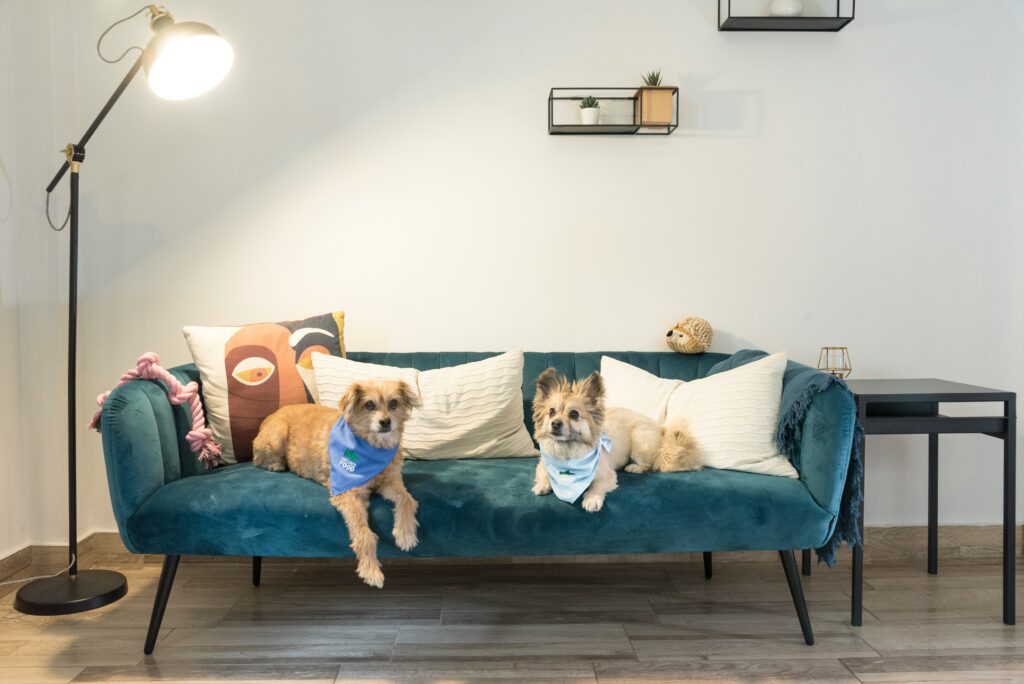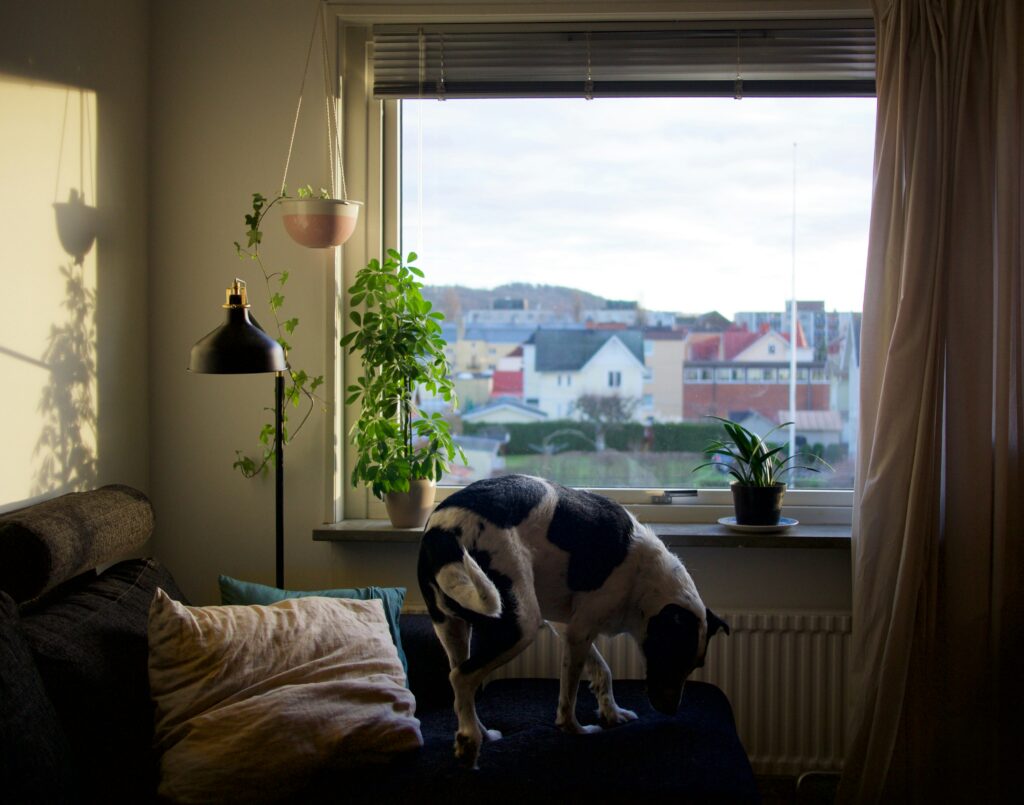Potty training regression can be a frustrating setback for any dog owner. It’s especially challenging in a small, stylish city apartment. You’ve worked hard to create a beautiful space that reflects your taste. But now, your dog’s potty habits are threatening that harmony.
Regression can happen at any age. It’s not just a puppy problem. Changes in routine or environment often trigger it. Stress can also play a big role.
Before you panic, remember that this is a common issue. It’s important to approach it with patience and understanding. Your dog isn’t doing this on purpose.
The good news is that there are solutions. You can address regression without sacrificing your home’s aesthetic. Stylish, functional products can help maintain your space’s beauty.
Consistency and positive reinforcement are key. They help re-establish good habits. A well-designed indoor potty solution can blend seamlessly with your decor.
In this guide, we’ll explore practical tips and stylish solutions. You’ll learn how to fix potty training regression fast. Let’s keep your home beautiful and your dog happy.

What Is Potty Training Regression?
Potty training regression occurs when a previously house-trained dog begins having accidents again. It can be puzzling when your furry friend backslides after appearing to understand the rules. Such setbacks can happen anytime, regardless of a dog’s age.
The reasons behind this regression can vary. Some dogs might regress due to changes in their environment or daily routine. Others might respond to stress or unexpected disruptions in their life.
Signs of Potty Training Regression:
- Frequent indoor accidents
- Signs of anxiety or restlessness before going
- Reverting to old habits such as squatting indoors
Recognizing these signs early can help address the issue swiftly. Understanding that regression is a temporary setback can empower you to approach it with patience. This challenge also gives you an opportunity to reaffirm the training, reinforcing the habits you want to see.
By remaining calm and consistent, you will help guide your dog back to their well-trained ways. With a considered approach, you can preserve the cleanliness and beauty of your home while supporting your dog’s needs.
Why Does Potty Training Regression Happen?
Understanding the causes of potty training regression can help you address it more effectively. Various factors can trigger such a backslide, but the underlying causes often relate to stress or change.
Consider the emotional well-being of your dog. Dogs are sensitive creatures that can react strongly to changes in their environment. A move to a new home, for example, can unsettle them significantly.
Routine disruptions also play a big role. Even a minor change in your daily schedule can alter your dog’s potty timing, leading to accidents. Dogs thrive on routine and predictability.
Common Triggers for Potty Training Regression:
- Moving to a new home or city
- A new pet or baby in the house
- Changes in the daily routine
- Visitors or changes in household dynamics
- Loud noises or construction nearby
Stress from these triggers can manifest as regression, but it can be resolved with a little patience and understanding. Recognizing these potential stressors allows you to provide comfort and security, helping your dog settle back into their good habits.
First Steps: Rule Out Medical Issues
Before considering behavioral causes, it’s crucial to rule out health problems. A visit to the vet can help identify any underlying issues that might contribute to potty training regression.
Urinary tract infections, gastrointestinal problems, or other medical conditions can cause accidents. These issues may present as regression but are treatable with professional help.
Addressing any health concerns first will allow you to focus on behavioral solutions with confidence. Once you’ve received a clean bill of health for your dog, you can proceed with reassessing their potty training routine. Remember, keeping their health in check is always the first step in maintaining a happy, harmonious home.
Common Triggers: Stress, Routine Changes, and Environment
Potty training regression can often be traced back to changes in your dog’s life. Even small adjustments can unsettle a dog’s routine. This includes household changes, like new furniture or moving to a new apartment.
Similarly, stress can come from unexpected visitors or a noisy environment. Dogs are sensitive creatures, and they pick up on shifts in their surroundings. Observing your dog’s behavior can help you pinpoint stressors.
Here’s a list of potential triggers:
- New household members or pets
- Changes in daily schedule
- Loud noises from construction or events

Address these changes slowly, allowing your dog to adjust gradually. Making time for extra walks or play can help ease their stress. Sometimes, providing a quiet, personal space with their favorite toys is all they need to feel secure. Understanding their triggers gives you the tools to manage regression effectively.
Stylish Solutions for Small Spaces: Making Potty Training Beautiful
Living beautifully with a dog is possible even in small spaces. The key lies in finding products that integrate seamlessly into your home. Consider a vertical pee pad system. It saves space and its sleek design won’t disrupt your decor.
Another option is a portable indoor potty with a grass mat. It mimics the outdoors and looks more like home decor than a utility item. Carefully chosen solutions blend functionality with style. This enhances your living experience without clutter.
Imagine a smart storage system for dog supplies. Lidded baskets can neatly stow away toys, leashes, and treats. They add a touch of sophistication while keeping essentials within easy reach.
Here are a few stylish options:
- Vertical pee pad system
- Grass-like indoor potty
- Lidded baskets for storage
Besides these, odor-neutralizing sprays can maintain a fresh ambiance at home. Choose products with scents that complement your living space.

Ultimately, the right choices allow you to embrace pet ownership without sacrificing style. They ensure your apartment remains a sanctuary for both you and your furry friend.
Rebuilding Good Habits: Consistency and Positive Reinforcement
When dealing with potty training regression, consistency is your best ally. Reinforce good habits by sticking to a regular potty schedule. Regular breaks will help your dog feel secure and understand when it’s time to go.
Positive reinforcement is crucial during this period. Reward your dog immediately after they do their business in the right spot. This can include verbal praise, affection, or a small treat. Be sure that the rewards are immediate and meaningful.
Avoid negative reactions to accidents. Harsh punishments can create stress and confusion, leading to further setbacks. Instead, redirect focus to desired behaviors with encouragement and positivity.
Consider using a small token system to guide your dog’s training. Each successful potty trip could earn your dog a star or sticker. As success builds, your dog will grasp the connection between their actions and your happiness.
- Establish a regular potty schedule
- Use treats and praise for good behavior
- Focus on positive reinforcement over punishment
Creating a Calm, Dog-Friendly Home
Your home should be a haven for both you and your dog. To create a calming environment, consider soft lighting and soothing sounds. This can reduce stress, which often contributes to potty training regression.
Incorporate natural textures and materials that feel both organic and comforting. Dog-friendly plants can add greenery and tranquility while being safe for curious pups. These elements enhance serenity for both of you.
Engaging your dog’s senses can be beneficial as well. Let fresh air in through accessible windows, allowing them to watch outdoor activities. This keeps them entertained and engaged, reducing anxiety.
A strategic approach to styling can also aid in the process. Choose multifunctional furniture that maximizes space without compromising aesthetics. Stylish storage solutions keep dog-related items organized and out of sight.
- Use calming colors and natural materials
- Introduce dog-friendly plants for added greenery
- Ensure a stress-free environment with soft lighting

Potty Training Tips for City Dwellers and Design Lovers
City living offers unique challenges, especially when space is tight. Yet, stylish solutions for potty training can seamlessly blend function with aesthetics. Focus on integrating design that supports your dog’s training.
Lidded baskets work well to store essential items. They keep your space organized without sacrificing style. Use them to discreetly store pee pads, cleaning supplies, or even small dog toys.
Embrace verticality when space is limited. Install a vertical pee pad system that looks like modern art, not an eyesore. These can hang unobtrusively while offering convenience and saving floor space.
Consistency with feeding schedules helps predict potty times, preventing accidents. This is crucial in apartments where access to the outdoors can be challenging. A regimented routine aids in avoiding regression.
- Opt for stylish storage solutions
- Utilize vertical space effectively
- Maintain consistent schedules for predictability
When to Seek Professional Help
Sometimes, potty training regression can be stubborn. If you’ve tried various tactics without success, consider consulting a professional trainer. They can offer tailored strategies suited to your dog’s unique needs.
Persistent issues might also indicate an underlying behavioral problem. In such cases, expert guidance can make a crucial difference. Remember, it’s about finding the right support to ensure harmony in your stylish home.
Final Thoughts: Patience, Progress, and Living Beautifully With Your Dog
Embracing patience is essential in managing potty training regression. Progress may seem slow, but persistence pays off.
A stylish home with a dog is possible when functional solutions are implemented. Remember, setbacks are temporary. With consistent effort, you and your dog can live harmoniously in a beautiful space.
